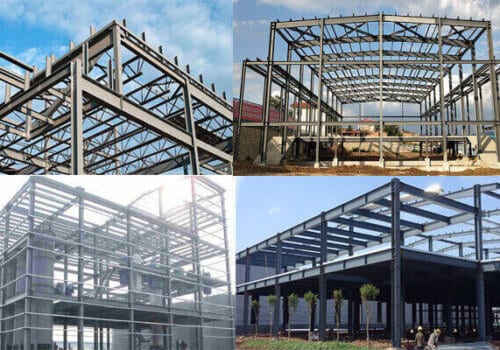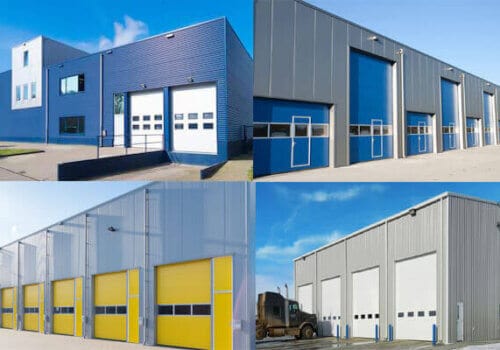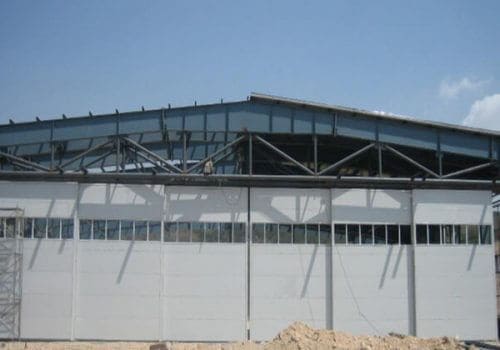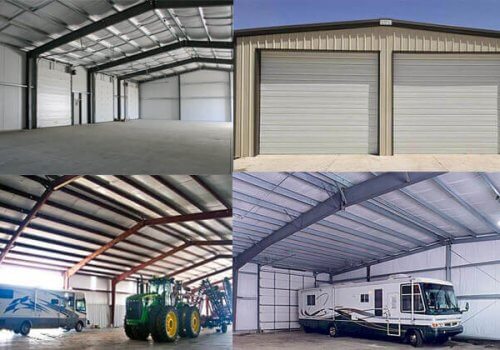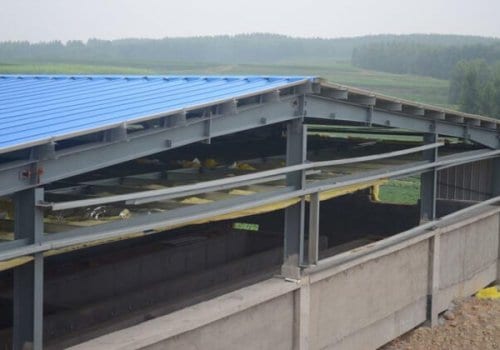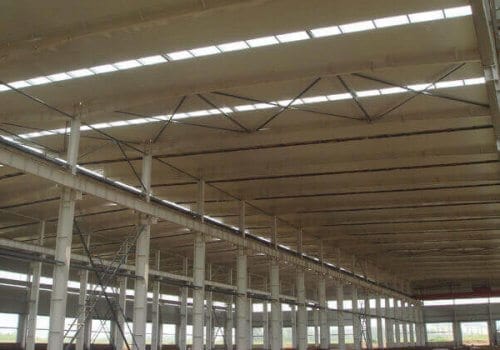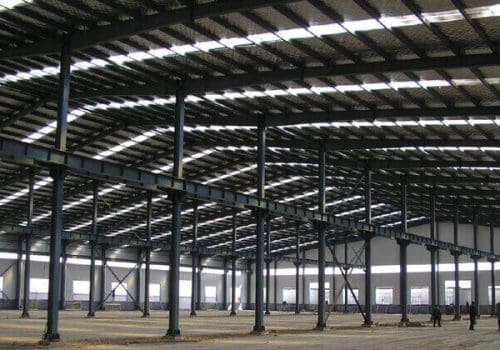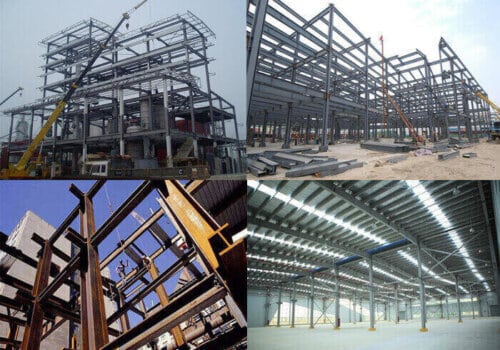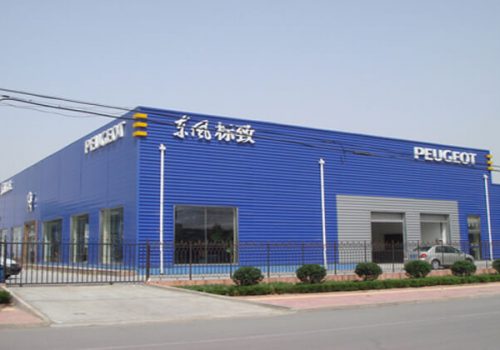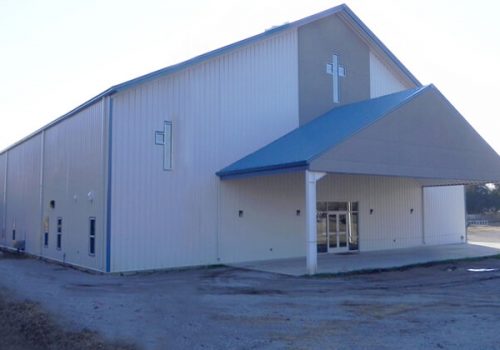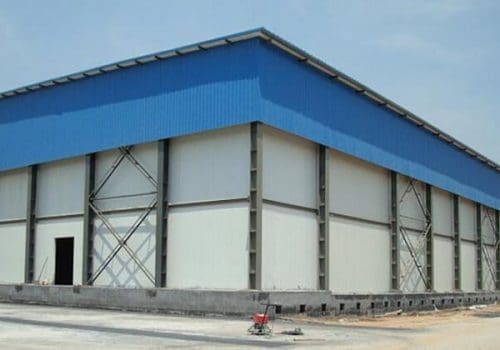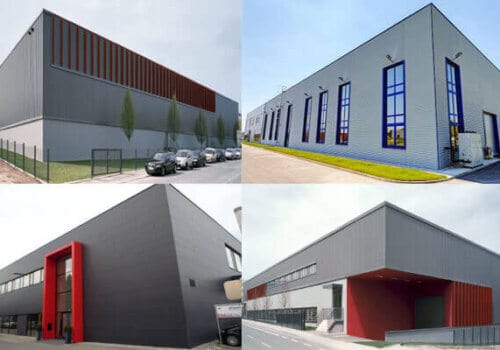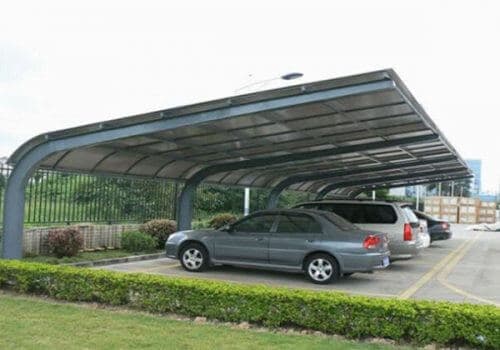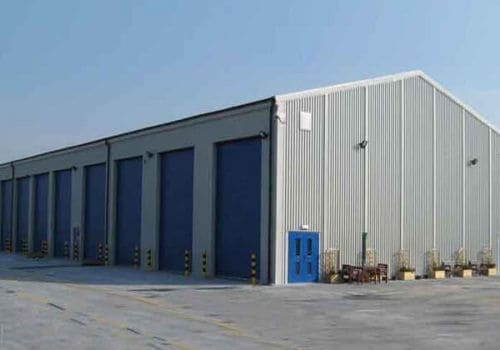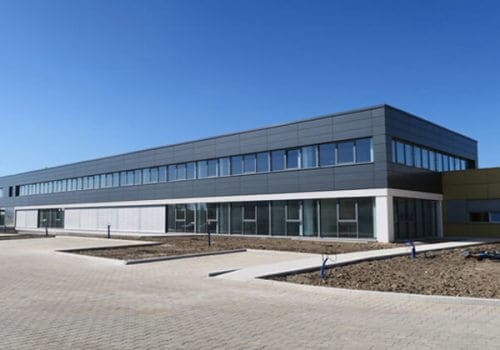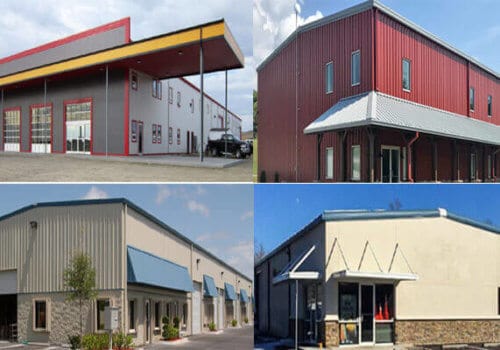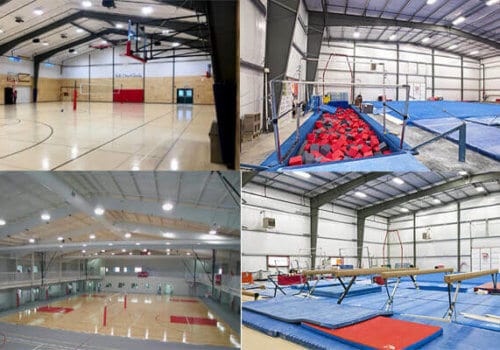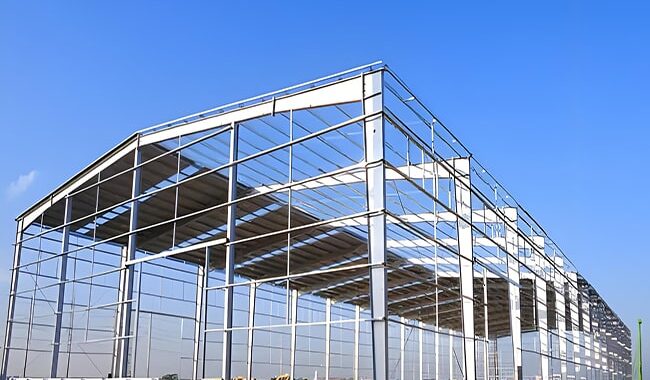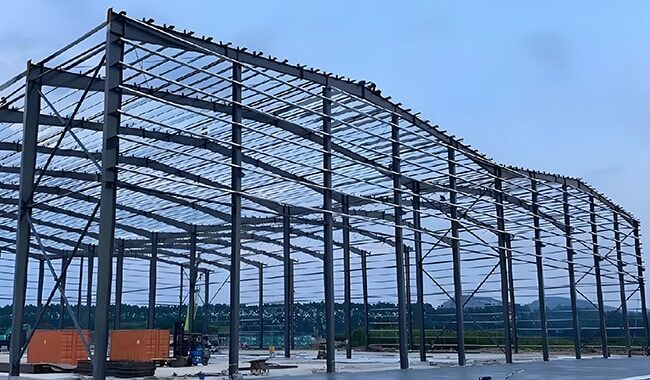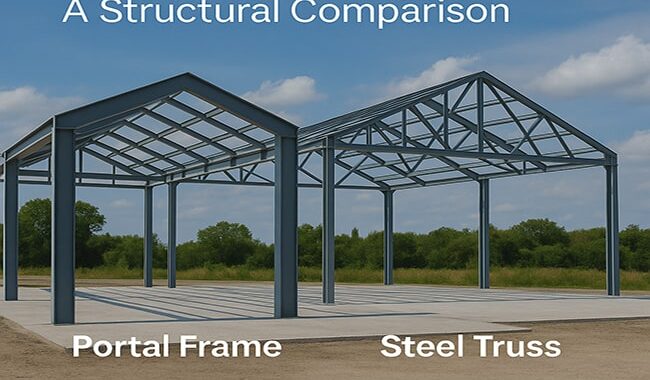A steel portal frame structure is a type of low-rise building composed of steel columns and rafters joined by rigid…
What Is a Steel Structure Office Building?
In the evolving landscape of urban construction, steel structure office buildings represent a shift toward more efficient, adaptable, and sustainable architecture. Unlike conventional concrete buildings, these structures rely on prefabricated steel components as their primary load-bearing framework. This modular approach not only accelerates the construction process but also enhances quality control and precision.
Designed for the demands of modern cities, steel office buildings make optimal use of limited land. Their lightweight frames, flexible spatial layouts, and scalability make them ideal for multi-story office complexes in dense urban environments.
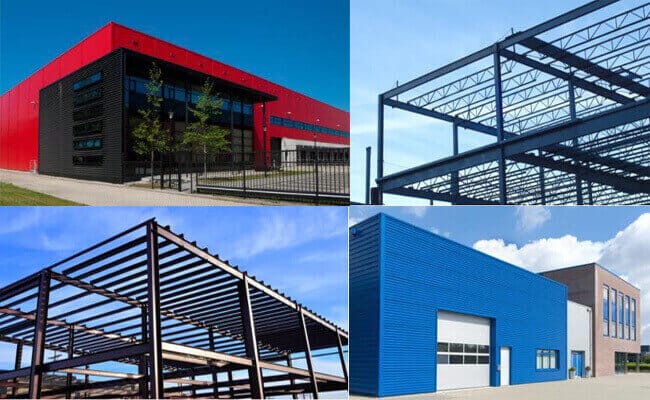
Steel vs. Concrete: Key Differences in Office Construction
When weighing construction options, developers often compare steel and concrete. Each has its merits, but the contrasts are significant:
Flexibility and Modifiability: Steel frames can be reconfigured with minimal intervention, providing long-term adaptability for evolving office layouts.
Construction Speed: Steel components are fabricated off-site and assembled quickly, whereas concrete requires time-consuming on-site casting and curing.
Weight and Foundation: Steel is substantially lighter, which reduces load on foundations and enables more economical substructure designs.
Labor Requirements: Steel structures demand less manual labor, while concrete relies heavily on on-site workforce and formwork systems.
Fire Resistance: Concrete offers natural fireproofing, while steel requires additional protection measures such as intumescent coatings or fire-rated cladding.
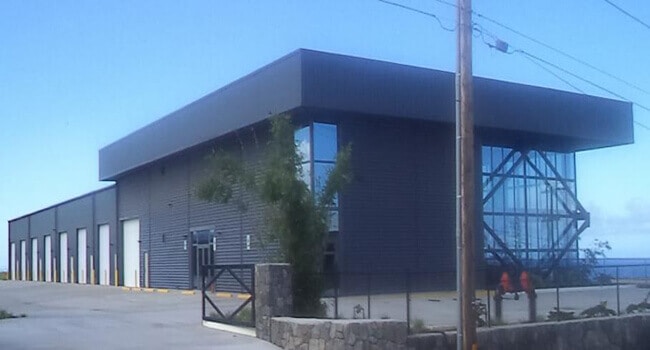
Advantages of Steel Structure Office Buildings
1. Environmentally Responsible and Energy Efficient
Steel structure buildings align with sustainability goals in both material use and construction methodology. Since most elements are manufactured in controlled factory settings, on-site waste is significantly reduced. Steel itself is 100% recyclable, and reused steel retains its mechanical properties, making it one of the most sustainable materials available.
When paired with high-performance insulation and glazing systems, steel buildings reduce the need for artificial heating and cooling. This not only lowers operational costs but also minimizes carbon emissions, supporting global climate goals.
2. Optimized Space Utilization
Steel’s strength-to-weight ratio allows for thinner walls and longer spans without interior columns. This means more usable floor area—up to 6% more than comparable concrete structures. The result is enhanced layout flexibility, ideal for open-plan offices, meeting rooms, or collaborative zones.
Steel also enables larger window openings and slimmer floor assemblies, contributing to better daylight penetration and more efficient vertical space usage.
3. Recyclability and Long-Term Value
Unlike concrete or brick masonry, which often becomes demolition debris, steel components can be dismantled and reused with minimal processing. This circularity extends a building’s lifecycle and supports environmentally responsible redevelopment strategies.
In addition, steel’s durability minimizes maintenance needs, lowering lifecycle costs and improving asset value over time.
4. Superior Seismic and Wind Resistance
Steel structures are engineered to perform under dynamic loads such as earthquakes and high winds. Their ductile nature allows them to deform without breaking, absorbing energy, and minimizing structural damage.
In regions susceptible to seismic activity or extreme weather events, steel offers peace of mind and enhanced safety for building occupants and assets alike.
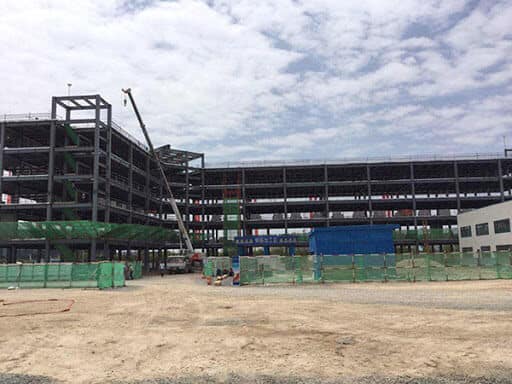
Design Considerations and Engineering Challenges
Despite its many benefits, steel construction presents certain technical considerations:
- Fire Safety: Unlike concrete, steel must be treated with fire-resistant coatings to comply with safety codes.
- Thermal Bridging: Steel conducts heat, so detailing must address insulation to avoid energy loss.
- Lateral Stability: Steel’s flexibility requires careful engineering to manage potential horizontal movement under lateral loads.
With proper planning and execution, these challenges are easily mitigated. Adhering to engineering best practices and local code requirements ensures structural integrity and occupant comfort.
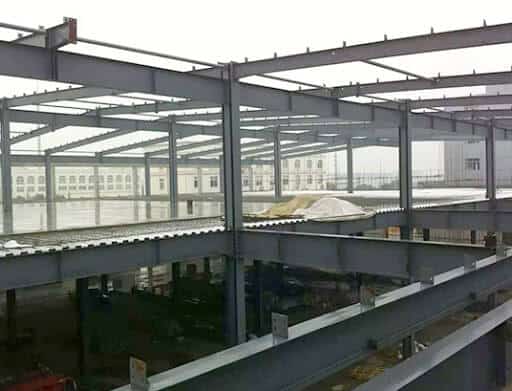
Construction Best Practices for Steel Office Buildings
To ensure long-term performance and safety, consider the following construction guidelines:
Corrosion Protection: Apply anti-rust primers before installation, especially on surfaces in contact with concrete or exposed environments.
Avoid Enclosed Hollow Sections: Use open profiles that can be painted internally to prevent rust from condensation.
Select Certified Materials: Use national-standard steel for reliable mechanical performance and ease of fabrication.
Plan for Vibration and Load Paths: Structural design should clearly define force transmission and avoid resonance issues.
Welding and Assembly: Prioritize full welds for load-bearing elements and avoid partial welds that may compromise strength.
FAQs about steel structure office buildings
What are the benefits of a steel structure office building?
Steel office buildings offer rapid construction, reduced material waste, flexible layouts, and excellent seismic performance. Their lightweight yet strong framework allows for spacious interiors and cost-effective builds.
Is a steel structure office building more cost-effective than concrete?
In many cases, yes. Although steel may have a higher initial material cost, it reduces labor and construction time significantly. Its prefabricated nature lowers project delays and long-term maintenance expenses.
Are steel office buildings safe in areas with earthquakes or typhoons?
Absolutely. Steel structures are highly resilient under seismic and wind loads due to their ductility and energy-dissipating characteristics. Properly engineered frames offer exceptional safety in adverse conditions.
Can steel structure buildings support flexible interior layouts?
Yes. The absence of interior columns in steel frames supports modular and open-plan layouts. This adaptability is ideal for changing workspace needs or future renovations.
Are steel buildings environmentally friendly?
Steel is among the most sustainable building materials. It is fully recyclable, generates minimal construction waste, and contributes to energy efficiency when paired with modern insulation systems.
Why Steel Is the Future of Office Building Design
With rising demands for speed, adaptability, and environmental performance, steel structure office buildings offer a future-ready solution for urban developers. Their capacity to combine architectural freedom with structural strength, all while supporting green construction goals, positions steel as a cornerstone of next-generation office design.
As the built environment evolves, steel is no longer just an alternative—it is becoming the standard for efficient, intelligent, and sustainable workplace construction.
